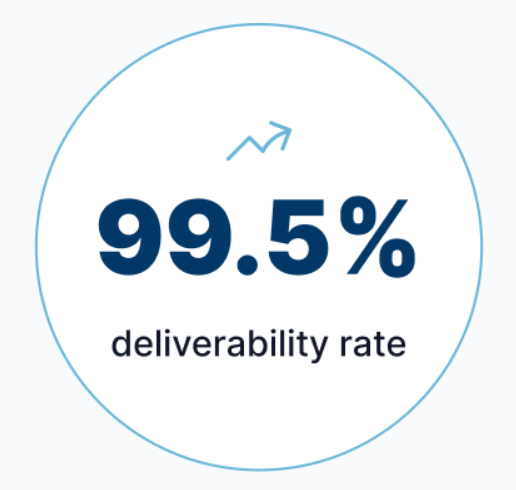
Creating online courses is a fantastic way to share your knowledge and make a living. The COVID-19 pandemic proved that e-learning is a viable alternative to the traditional classroom, and growing concerns about the costs of living means many professionals are eager to advance their skills with online classes. In short, there’s no better time to be a course creator.
A central part of running a successful e-learning business is communicating with existing and potential students. Email is one of the most popular ways to do so. Not only is email a useful communication tool; it’s also a great way to increase course sales and build strong relationships with your students.
As your business grows, it’s essential to manage your email subscriber base. Keep reading to learn more about how to keep your email list healthy and engaged — strategies that ultimately enhance course creation success.
Why manage your email subscriber base?

Email has one of the highest returns on investment of any marketing endeavor. As a course creator, a healthy email list can translate directly into more students — and higher profits. Successful email campaigns, however, hinge on maintaining a well-managed subscriber base.
There are two primary goals for email management: low churn and high engagement.
Churn rate is the percentage of email recipients who unsubscribe or are otherwise removed from your list within a certain period of time. Of course, you can also have recipients who remain on your list but never engage with your emails. Email engagement means people are interacting with your emails — including opening, reading, and clicking on links.
Churn and engagement rates impact your sender reputation among internet service providers (ISPs). Having a strong reputation can boost your email deliverability and ensure your messages arrive in your students’ inboxes, while a poor reputation increases the chances of your messages going to spam.
10 ways to manage your email subscriber base
Managing your email subscriber base is one of the best ways to achieve and maintain a solid sender reputation. Below you’ll find 10 ways to manage your growing email subscriber list. If you’re unsure how to implement these steps, don’t worry, most email marketing services include features to help you with subscriber management strategies.
Ensure quality contacts from the start
Growing your email subscriber list is important, but quality outweighs quantity. A list full of disengaged or invalid email addresses only harms your metrics and sender reputation. There are many strategies for collecting high-quality subscribers:
- Build your subscriber list organically. Don’t buy or scrape email lists, which can include invalid addresses or disinterested recipients. In some countries, sending unsolicited emails is even illegal.
- Use a double opt-in feature, which requires subscribers to confirm their email addresses. This strategy ensures all your recipients are eager to hear from you. It also helps you avoid adding invalid addresses to your list.
- Avoid fraudulent emails by adding a security feature like Google reCAPTCHA to subscription forms, which filters bots and spam from real human subscribers.
- Immediately remove hard-bounced addresses from your list, as they weaken your deliverability scores.
Following these best practices means your email list only contains real subscribers who want to receive your messages — and are therefore more likely to engage with them.
Monitor email analytics

Email analytics include rates like click-to-open (CTOR), spam, unsubscribe, and bounce. Your email marketing service will supply these metrics. Closely monitoring them is an essential part of managing your email subscriber base, as they’ll allow you to improve your email practices or content when there’s a potential problem. For example, if you notice your unsubscribe rates increasing, you may want to reduce your send frequency or personalize the email content.
Segment your subscribers
Email segmentation, or dividing subscribers into unique groups based on certain criteria, becomes vital as your recipient base grows. Sometimes you should divide recipients by demographics (age, location, interests) For course creators, additional segments (and email topics) include:
- Enrolled students: Send updates on their active course(s).
- Potential students: Send course information or coupon codes.
- Students who recently completed a course: Send congratulatory emails or offers on upcoming courses for further learning.
- Students interested in creating their own courses: Send links to your blog or e-book with step-by-step guides on course creation.
Segmentation allows you to tailor your emails to specific types of people, making them more relevant and engaging.
Personalize your messages
Segmentation goes a long way in making your emails more pertinent to recipients, but you can still take personalization to a higher level. Browse your email inbox for a moment and you’ll notice that many marketing messages include your first name.
Email marketing services usually offer a feature called dynamic tags, which populate your emails with subscriber data you’ve previously captured. For example, each time a student enrolls in one of your courses, they probably fill out a form with their name, contact details, and subjects they’re interested in. Put these details to use in your emails so your messages don’t sound generic. Personalization can capture your recipients’ attention and increase engagement.
Write incredible emails
Your email content is one of the biggest factors in keeping your subscriber base interested and engaged. This advice may sound obvious, but there are many factors that go into writing a great email, including:
- Intriguing, accurate subject lines
- Benefit-driven headlines
- Concise, punchy sentences
- A strong call-to-action (CTA)
- Eye-catching images
It’s also important to make sure you’re following email legal guidelines like CAN-SPAM or GDPR, depending on your location. These regulations differ, but they generally include requirements like clearly identifying yourself and including an unsubscribe link in all marketing messages.
Use A/B testing
You spent lots of time writing a great email — were your efforts effective? A/B testing can reveal the answer. Another feature offered by many email marketing services, A/B testing allows you to measure the impact of your email content.
To run these tests, tweak various aspects of your emails such as subject lines, headers, message length, or the content itself, and send them to different segment lists. From there, you can measure open, click-through, and engagement rates. Once you know which strategies are most effective, you can implement them across all of your emails and recipient segments.
Give recipients control
Your existing and potential students, like any email user, receive a lot of messages. Sometimes, all those emails become annoying or stressful. Providing an unsubscribe option is a must for email best practices and legal compliance, but you can potentially avoid unsubscribes by giving your recipients other options, too.
Link a communication preferences page in your emails. From there, students can select their preferred email type — like course-related messages, newsletters, or special offers. You can also provide options for email frequency. For example, they might prefer an information-rich monthly update instead of several emails each week. By giving your students greater control, you’ll lessen the likelihood of low engagement and high unsubscribe and spam rates.
Try a re-engagement campaign
Email analytics reveal which recipients are opening and interacting with your messages — and which ones are ignoring them. Recapture your audience’s attention with a re-engagement campaign. These messages can entice students with special offers and exciting information. You can also give them an opportunity to tell you what they’re interested in learning about, allowing you to tailor your upcoming emails to their interests.
Periodically clean your email list
Sometimes, no matter how terrific your emails and re-engagement campaigns may be, recipients simply won’t budge. It may be time to clean your email list so ISPs won’t penalize you for low engagement. After a period of inactivity, remove those emails from your list and focus on the students who engage with your e-learning brand. While your goal is to grow your email list, the best subscriber base is an active, interested one.
Don’t forget transactional emails

The above strategies relate to marketing emails, but don’t forget about transactional emails: the messages that are automatically triggered by an action. For example, when a student enrolls in one of your courses, they should receive a confirmation message. Transactional emails help you manage your email subscriber base through clear, prompt communication, which builds trust.
SendWP is a highly-regarded transactional email service for WordPress known for excellent deliverability. Plus, we partner with LifterLMS, a powerful e-learning software that takes your courses to new heights. Connecting SendWP and LifterLMS is fast and simple — get started to see for yourself!
Transform students into active subscribers today
You’ve already launched your e-learning business and have a list of students waiting to hear from you. The next step is managing your growing email subscriber base. The 10 strategies discussed in this article will help you transform mere recipients into active subscribers. And when your audience is engaged, enrollments soar.
Don’t wait! Put these tactics into practice today.
Let SendWP Handle Your Emails!
Say goodbye to email delivery headaches with SendWP. Our efficient and reliable solution ensures that your important messages reach their destination on time, every time.
